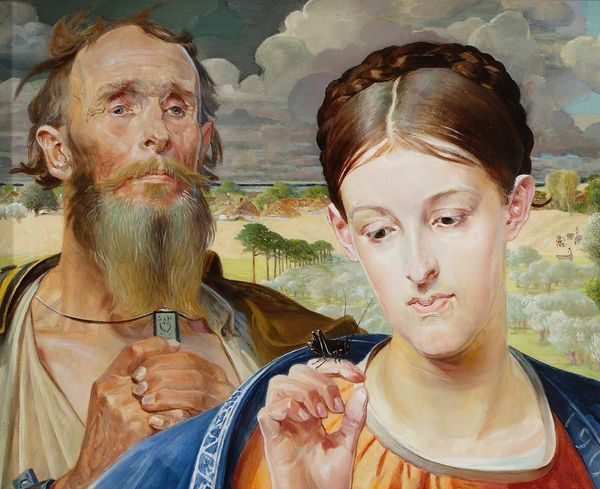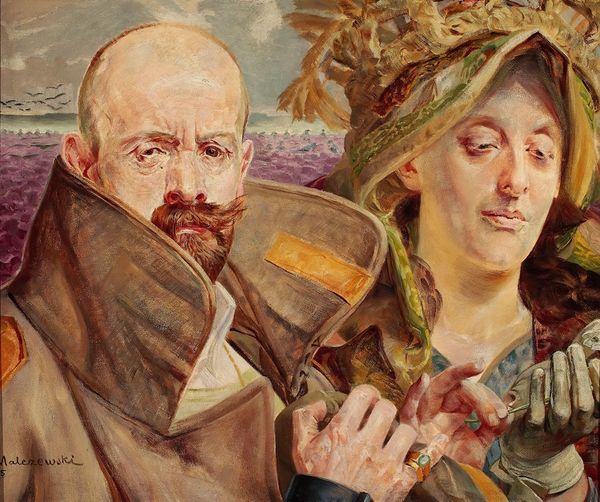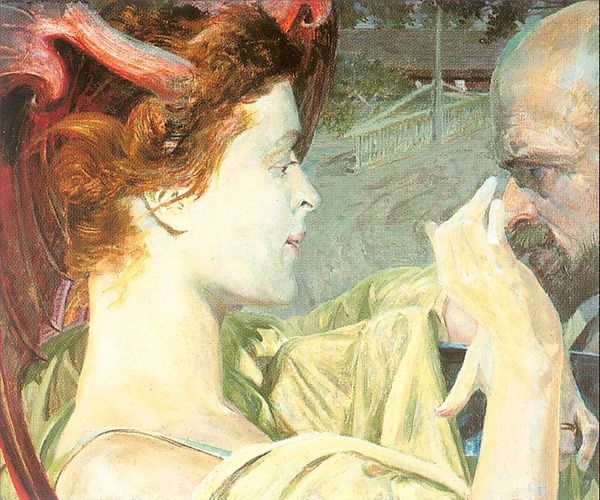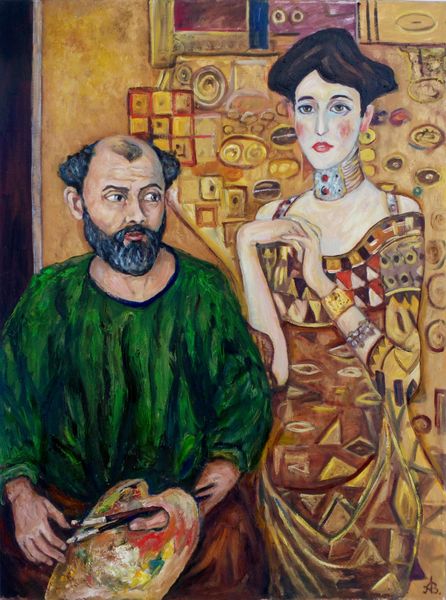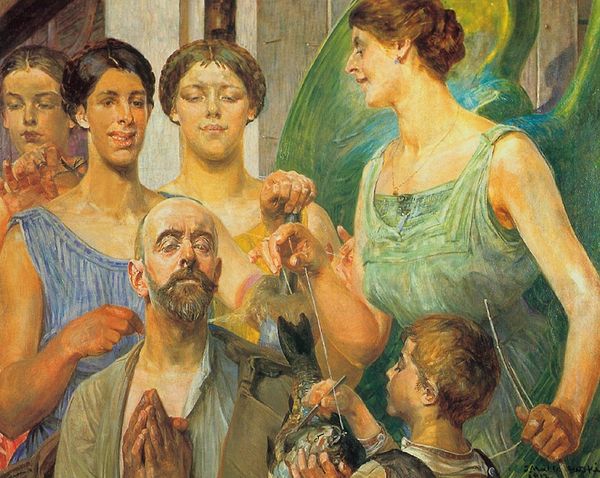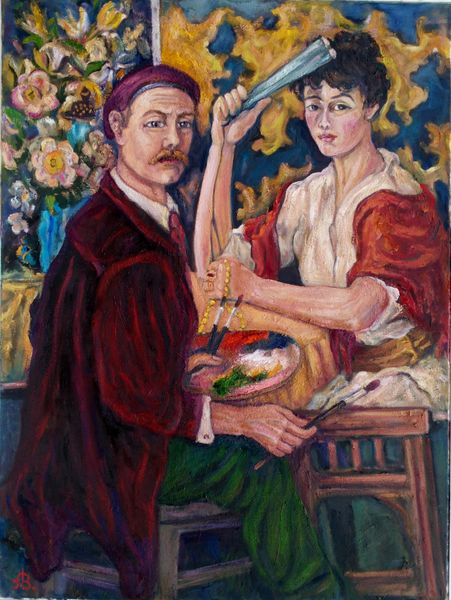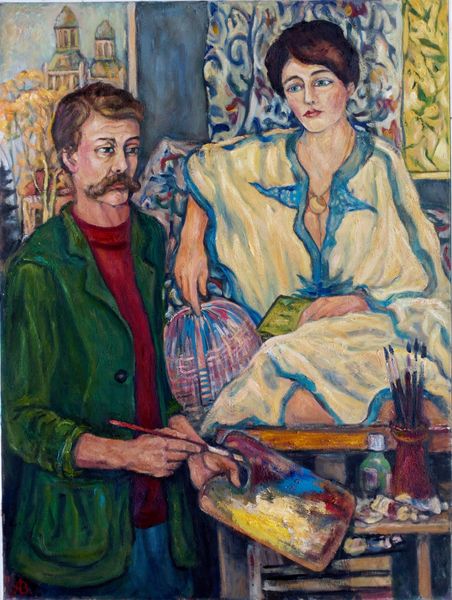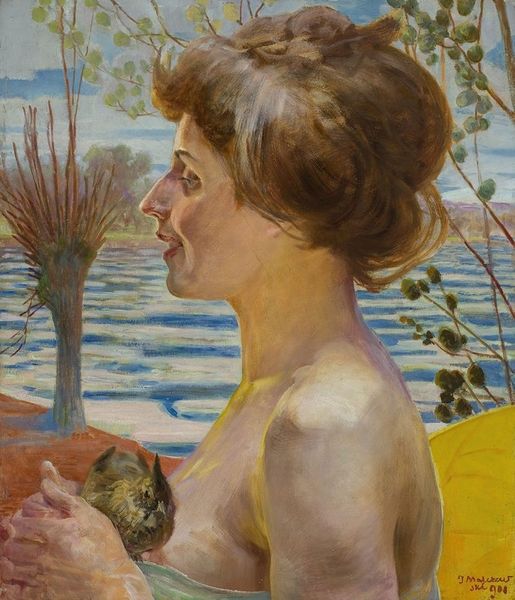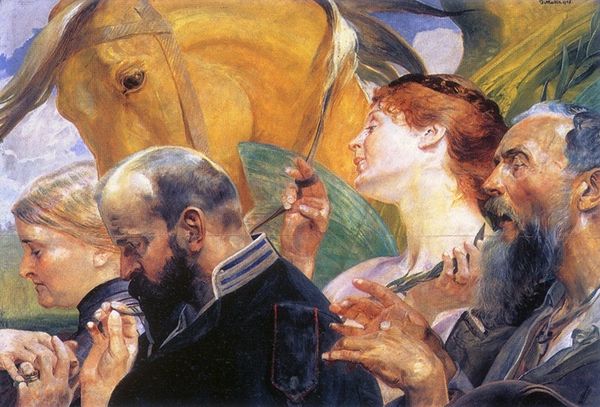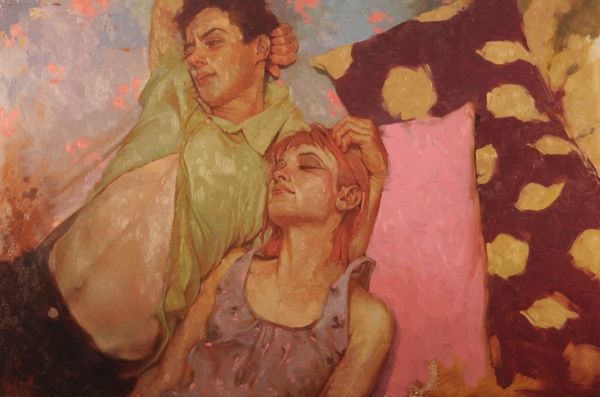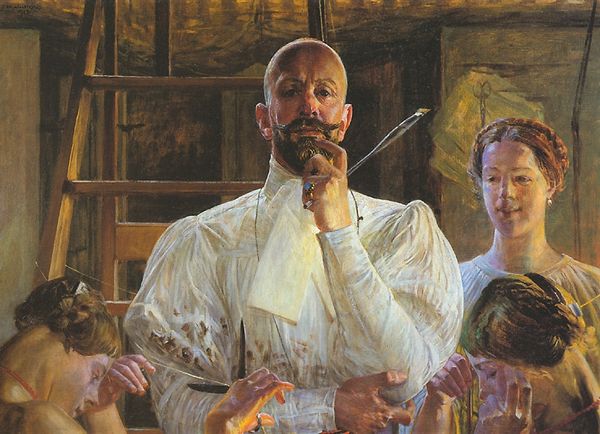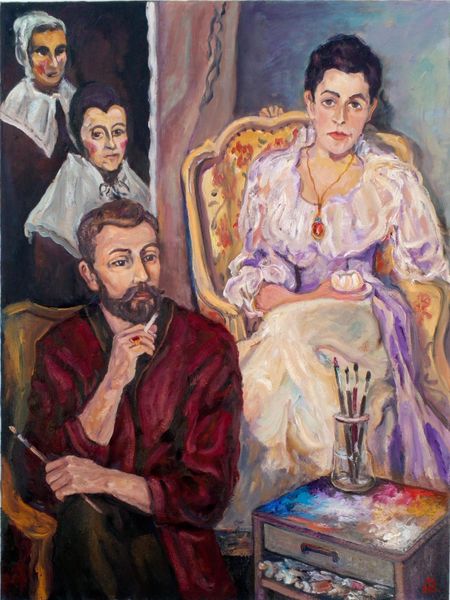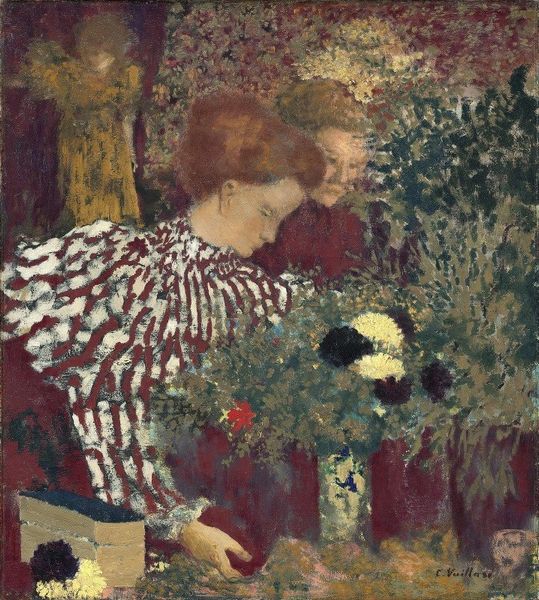
painting, oil-paint
#
portrait
#
figurative
#
self-portrait
#
painting
#
oil-paint
#
oil painting
#
symbolism
#
portrait art
Copyright: Public Domain: Artvee
Curator: Let’s delve into this arresting “Self-portrait with muse and buddleia” by Jacek Malczewski, painted in 1912. It’s a symbolic work, rendered in oil. What’s your first take? Editor: There's something both ethereal and earthly about this piece, don't you think? A luminous quality to the muse, set against this dense backdrop of blooms. The colors have an almost dreamlike palette; I can feel the warmth on my skin as I gaze upon it. Curator: Malczewski often grappled with Polish identity and the role of the artist in his symbolism. This painting, viewed through a postcolonial lens, asks vital questions about agency. Is the artist free, or captive, in relation to the figures who inspired his vision? Does art have social responsibilities, and is he acting them out in these lush gardens? Editor: It is true that Malczewski's life certainly coincided with a time when Polish nationhood was deeply affected by politics and power. Let’s consider how the socio-political atmosphere likely played a pivotal role in shaping this piece, and potentially impacting its later reception in his contemporary exhibition contexts. This isn’t just personal expression; it’s situated. Curator: Precisely. We might even examine the gaze of the muse, traditionally a silent figure, an object of artistic inspiration, but consider if it now speaks of otherness? How did Malczewski view that artistic partnership within that frame of Polish heritage? Editor: That tension between the personal and the symbolic feels very present. The artist appears confined, holding an instrument – his means of artistic output. The pose gives me the sense that it could be that it limits, more so than it liberates, him. Is the buddleia then a metaphor for transient beauty or stifling artistic constraint, I wonder. Curator: I would say yes. If we look into the way museums at the time were actively shaping conversations about this art... It's not a matter of reading history back into art, it's acknowledging it has always been there. I’m increasingly grateful for the ways contemporary analysis highlights complexities! Editor: It’s easy to become totally absorbed in art when one considers how it continues to make room for modern and alternative meanings and interpretations! Thank you for sharing.
Comments
No comments
Be the first to comment and join the conversation on the ultimate creative platform.

